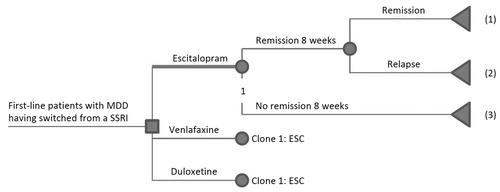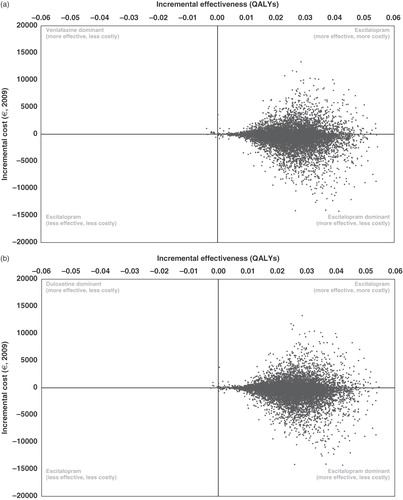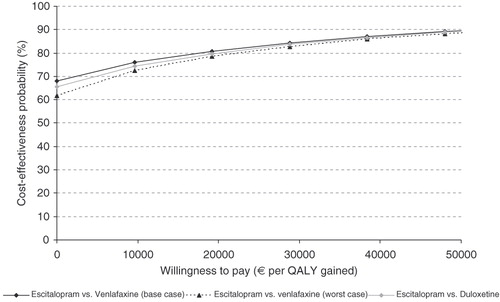Figures & data
Figure 1. Model framework for second-line treatment. (1) Remission by 24 weeks: Patients who achieved remission by 8 weeks following initiation of second-step therapy and remained in remission by 24 weeks. Patients were to continue taking the same medication for another 4 months. (2) Relapse at 24 weeks: Patients who achieved remission by 8 weeks following initiation of second- step therapy but experienced relapse during the following 4-month period. (3) No remission at 8 weeks: Patients who did not achieve remission during the first 8 weeks of second-step therapy.

Table 1. Clinical probabilities – remission, relapse, adverse events, titration rates.
Table 2. Unit costs (€2009), including additional medications for adverse events.
Table 3. Resource utilization per patient for inpatient care, outpatient care, production loss (24-week data), according to remission status and titration.
Table 4. Utilities for QALY calculation.
Table 5. Model effectiveness results: escitalopram versus venlafaxine and duloxetine.
Figure 2. (a) The cost effectiveness of escitalopram compared with venlafaxine (base-case scenario): incremental effectiveness (on QALYs) versus incremental total costs. 1 SEK = €0.0960. (b)The cost effectiveness of escitalopram compared with duloxetine: incremental effectiveness (on QALYs) versus incremental total costs. 1 SEK = €0.0960.

Figure 3. Cost-effectiveness acceptability curve – escitalopram compared with venlafaxine and duloxetine. 1 SEK = €0.0960.

Table 6. Cost effectiveness of escitalopram.
Table 7. Sensitivity analyses – effect of variation in key effectiveness parameters on costs (mean, €2009) and QALYs for escitalopram versus venlafaxine and duloxetine.